Despite its age, the history of this mythical Jamaican distillery is mostly unknown. Its rums were never marketed under its own name, except very recently, and it almost disappeared in a fire in July 2018. And yet it has made more than one humble enthusiast dream, beginning with Alexander Gabriel, one of its current co-owners.
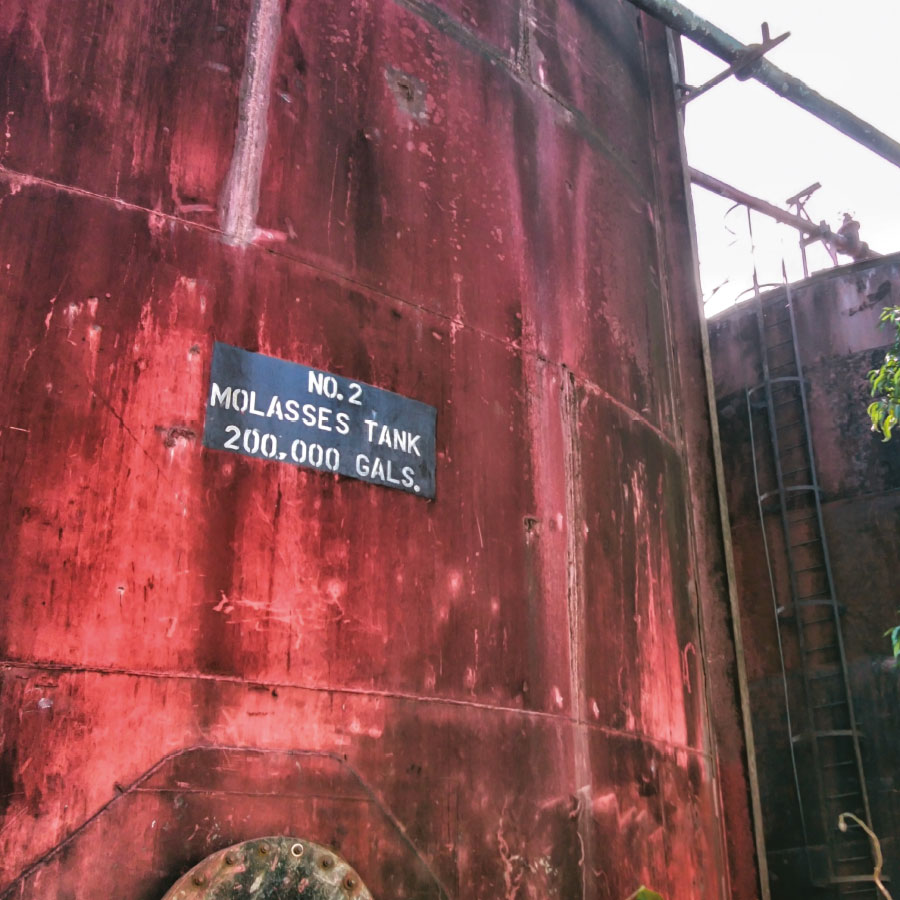
Rather vague origins
Long Pond isn’t named after a long pond, but is actually the name of a mountain in northern Jamaica. Above all, it is an agricultural area planted with sugar cane, whose name appears for the first time in the 18th century. It is mentioned in the history of two cousins, the Clarkes, after whom the local town is named – Clark’s Town.
One of the cousins, Simon, Baronet of Salford (near Manchester), was exiled to Jamaica in 1730 for “highway robbery” while still serving as an officer in the Royal Navy… he joined his cousin who had arrived on the island eight years before as “Crown Emissary.” And it was at the marriage of the latter’s son, also called Simon Clarke, in 1760, that the name Long Pond appeared, as that of a domain of which he became the owner.
At least this is what Luca Gargano claims in his “Atlas du Rhum” (published by Flammarion), which goes on to state that: “there is no trace of any successive owners until 1921” – which is nevertheless almost two centuries of total blackout! Was there a distillery or, at least, a sugar factory? No one knows for sure, even if it is likely, judging by the age of the equipment that is still to be found in the existing buildings.

However, there is a document dating back to 1780 reporting on sugar production and the shipment from a nearby port of 85 rum puncheons (500-litre barrels) originating from the Long Pond area.
From Sheriff to Seagram
In 1921, The owner of Long Pond was finally identified following its acquisition by a Scottish company, Sheriff & Co, which also built a sugar factory. For several decades, it expanded the domain by purchasing neighbouring properties. But there is no trace of the Long Pond brand of rum, which is absolutely normal!
For in Jamaica, very few distilleries marketed their production directly. Their spirits were sold to traders, often British, who blended these rums of varying provenance. However, some traders also owned large domains and their own distilleries, such as the Wedderburn family, which gave its name to one of the references of Jamaican rum.
They were the ones who were then in charge of aging, almost always carried out in London’s wharf warehouses or other British ports: these are the famous dock rums and navy rums that have been very popular since at least the 19th century. Derived exclusively from pot stills, Jamaican rum, rather rich or even powerful or heavy, makes an excellent foundation, but some like to blend it with smoother or lighter rums to obtain more accessible and commercial rums for the international market.
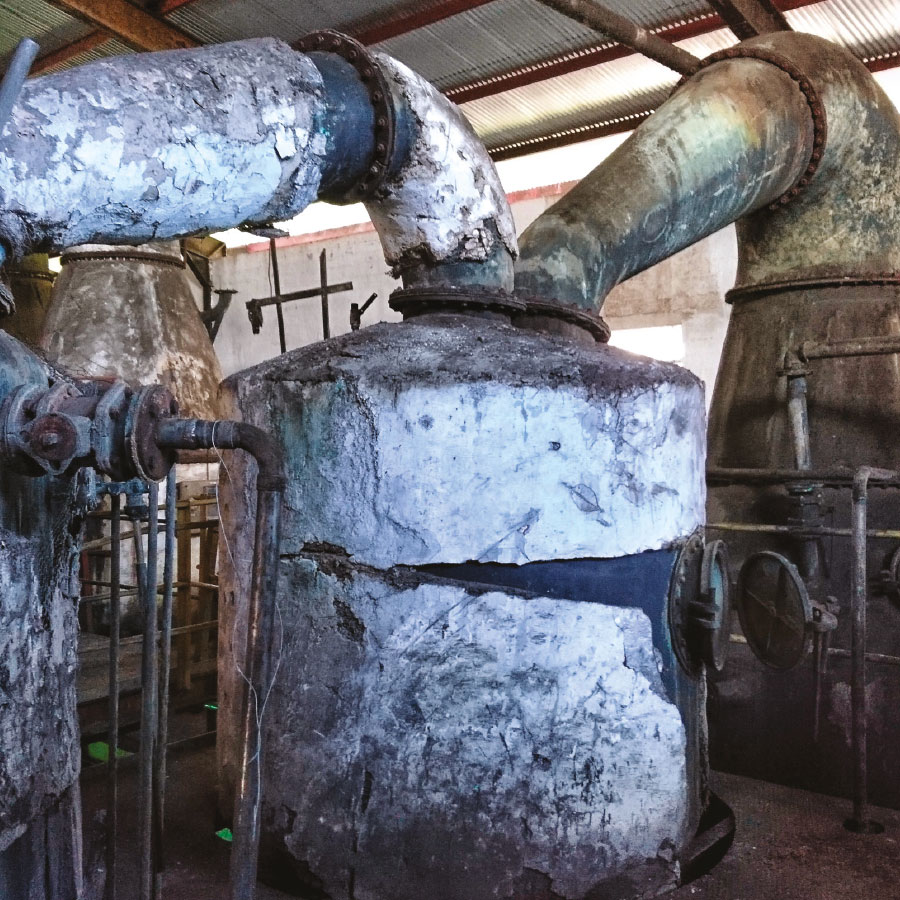
That is why, in 1953, the Seagram spirits group (based in Canada) bought Long Pond, because it needed its rum to “strengthen” its Captain Morgan brand created in 1944: at the time, this group, which had been experiencing strong growth in whisky in Canada, the United States, and even Scotland for some 20 years, no longer had access to the essential cereals required, and its then owner turned to rum, which had been of some overseas interest for several years.
It then started importing molasses for its distilleries before investing directly in Caribbean plantations and distilleries. The brand developed very quickly and the other Jamaican distilleries were no longer sufficient to meet demand and supply the necessary quantities. During this process, and after the acquisition of Vale Royal, the neighbouring estate, Long Pond was renamed Trelawny Estate, which is the name of the parish that encompasses the area.
Jamaica in crisis despite the new rise of rum
Two decades later, Seagram was expanding ever further, producing and marketing ever lighter products, investing in brands and distilleries across the Caribbean and Latin America, Ron Rico in Puerto Rico, FANAL (Ron Centenario) in Costa Rica and DUSA (Diplomatico) in Venezuela. The group withdrew from Jamaica, where column-based rum production had been allowed several years earlier, after seeing the island’s distilleries shut down one after the other, to such an extent that the Jamaican authorities began a process of nationalisation of the island’s rum-producing activities.
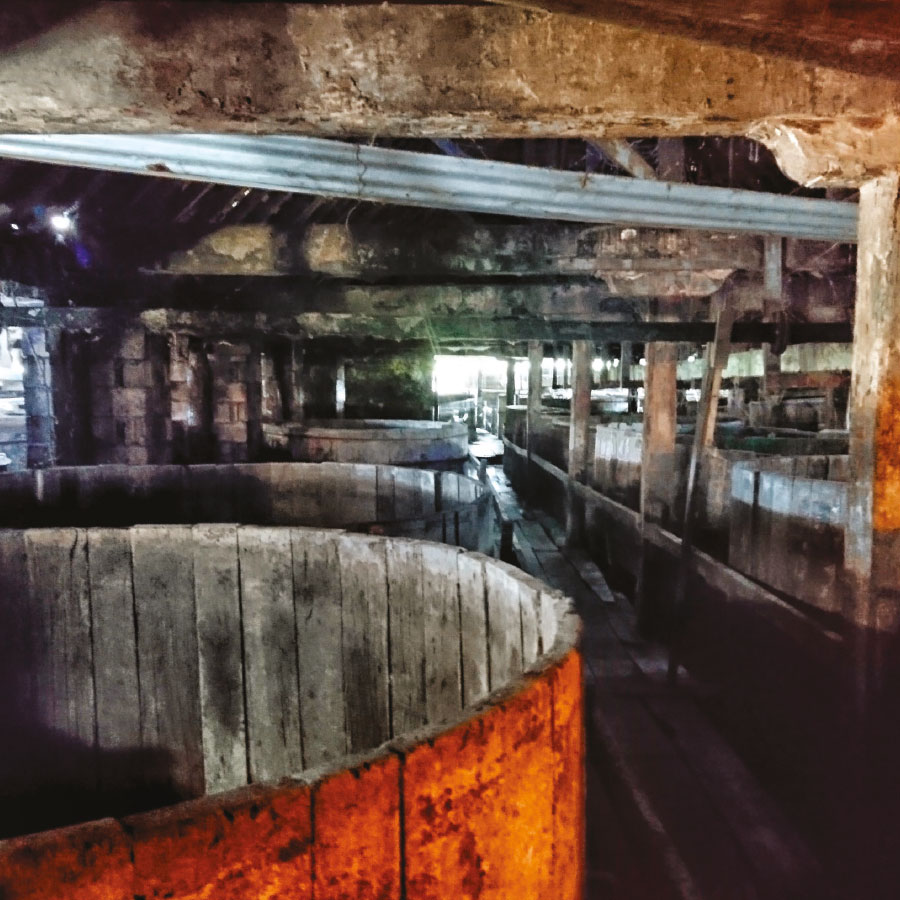
Trelawny Estate was nationalised in 1977, and three years later National Rum of Jamaica (NRJ) took control of the island’s fine distilleries in order to maintain their activity: Clarendon, Long Pond but also Inswood, now closed, but still owned by NRJ. This first salvation would last for a few years, but in 1993 the Jamaican State was still losing money on its distilleries and decided to call on two prestigious distilleries in the Caribbean, Demerara Distillers in Guyana and the West Indies Rum Distiller (WIRD) in Barbados, and invite them to invest.
This resulted in Long Pond having three owners, each owning one-third of the capital: the Jamaican government, Demerara Distillers and WIRD.
A Frenchman gets his foot through the door
In March 2017, this Bajan distillery was bought by the French group Maison Ferrand and that is how Alexandre Gabriel, well known in the world of rum for his Plantation brand, among others, got a foothold in Jamaica too. One of his greatest dreams had come true! It will still take a few months of patience to restart production in this mythical distillery, as it has been undergoing maintenance since 2012 for an upgrade of its vinasse treatment system.
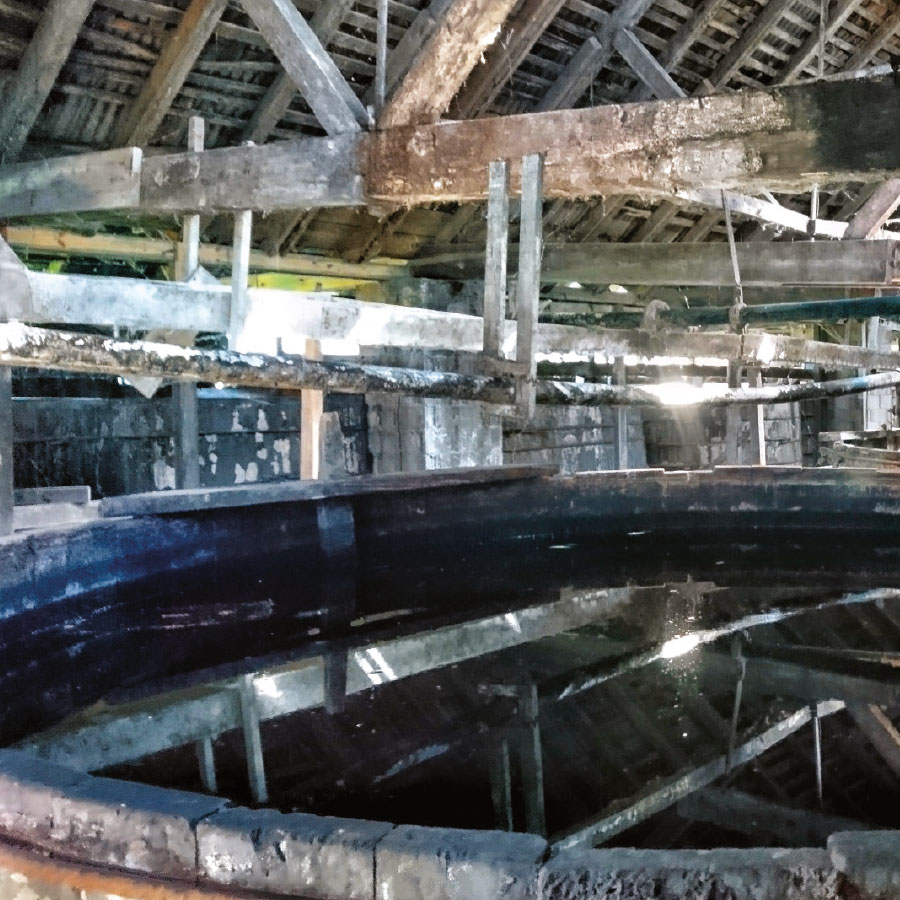
It restarted its stills in July 2017. Incidentally, the small sugar mill adjacent to the distillery which is no longer in production, belongs to Everglade Farms, the group which also owns the Hampden distillery. However, on July 17, 2018, an intense fire broke out and seriously endangered the distillery (see end of article).
Dunder and muck pits, the keys to Jamaican-style rum
Like other traditional distilleries on the island (Hampden and also Clarendon, at least in part), Long Pond is characterized by a specific fermentation process, referred to as dunder, which uses the vinasses that remains at the bottom of the still after the first distillation. These vinasses are most often added during fermentation to acidify the vats, promoting the formation of esters (and adding some natural yeasts).
Dunder is also used to produce a natural bacteriological culture called muck in “pits” which is added at the end of the fermentation process to significantly increase the level of esters in Long Pond and Hampson rums, who are the last guardians of this ancestral technique. To obtain this muck, the vinasses are mixed with fresh bagasse, rich in wax, which is itself an ideal substrate for microorganisms naturally present in the distillery environment. Overripe tropical fruits can be also be added.
This can then be used for several years… It is one of the key features of Jamaican terroir, and for Alexander Gabriel, this mixture is the true signature of a distillery, because there are specific bacterial colonies which give the rum a very particular aromatic style.
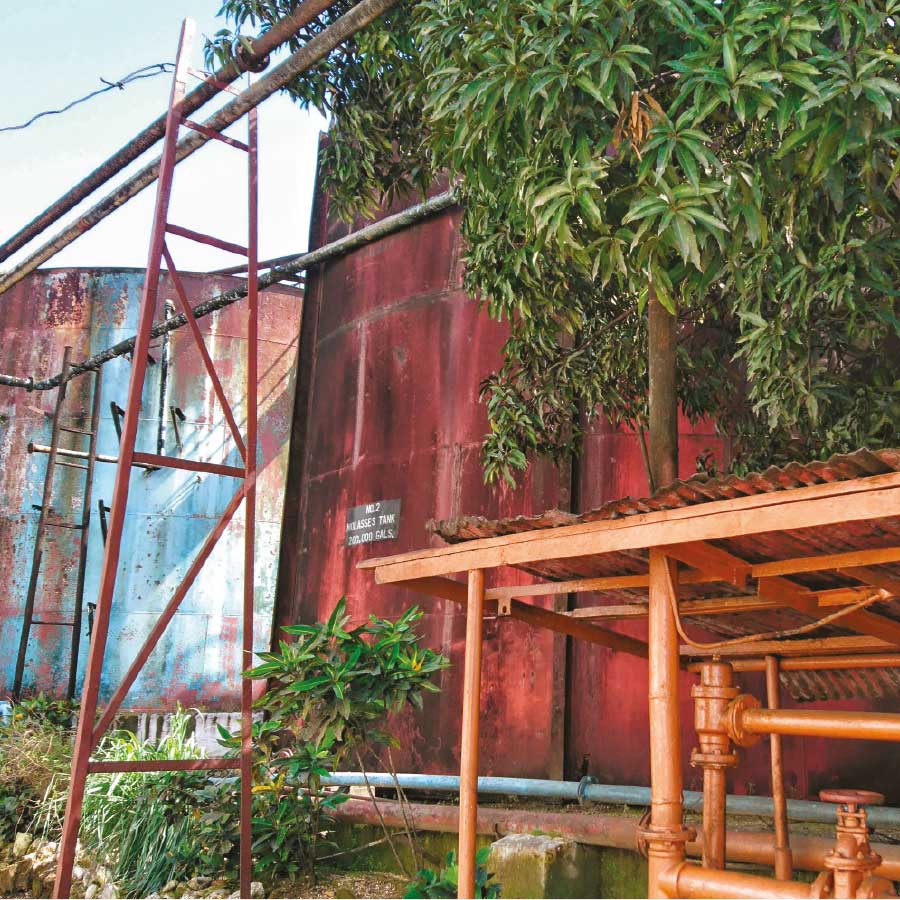
If a normal fermentation typically lasts 2 days, the addition of muck will significantly increase its duration to up to 3 weeks, which is exceptional in the tropical climate! Mathematically speaking, this means that the fermentation capacity of the distillery (number of vats, size of buildings) must be greatly increased and requires substantial investments.
This fermentation takes place in large, holm oak tuns of 13, 18 or 45,000 litres. These are older models, as evidenced by their endless screw clamping systems, which are no longer used in today’s tuns. Long Pond used to have as many as 90, and by the 2018 fire, a good fifty were still in use.
History of esters
This type of fermentation which is very long, uses added vinasses and in some cases famous mucks, and explains the particular style of Jamaican rums, especially those distilled at Long Pond. It is characterized by a more or less important level of esters, which also heavily depends on the behaviour of the pot stills, because this is where the distiller’s know-how really comes into play.
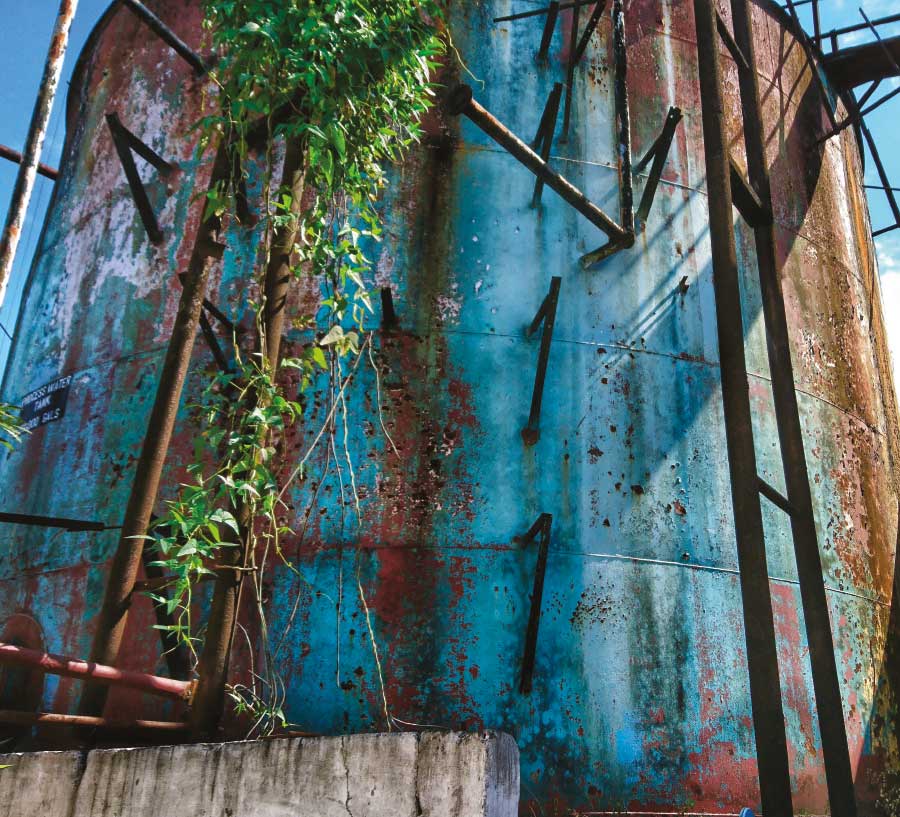
After fermentation, the mash goes into the pot stills. There are five in total, built by Vendôme in Kentucky and John Dore in Britain, four with a capacity of 13,200 litres and a smaller one with a capacity of 5,600 litres. But each still is unique, as the shape of the boilers were modified over the years, and also because of significant differences in the arc and diameter of the swan’s necks. There was also a Coffey-type copper Blairs column still, which has long been decommissioned. Will it be put back into service one day?
Jamaica has long classified its rums based on their aromatic intensities, calculated according to the concentration of esters, often based on the main one – ethyl acetate. This is what we call the non-alcohol content (TNA) in Europe, which measures the content of volatile substances and contributes to the nose of these spirits.
It distinguishes four categories:
– Common Cleans, which contain between 80 and 150 gr/hl – Plummers, between 150 and 200 gr/hl – Wedderburns, between 200 and 500 gr/hl – Continental Flavoured, between 500 and 1700 gr/hl
This actually made life easier for rum traders, who found them easier to navigate, before composing their blends and then aging them far away from Jamaica.
As Alexander Gabriel pointed out, however, in an interview published in a previous issue of Rumporter, you really shouldn’t think that Long Pond rums are all heavy spirits overloaded with esters, because the distillery can also produce “lighter” rums, which have an amazing aromatic richness, due to a very specific fermentation and distillation.
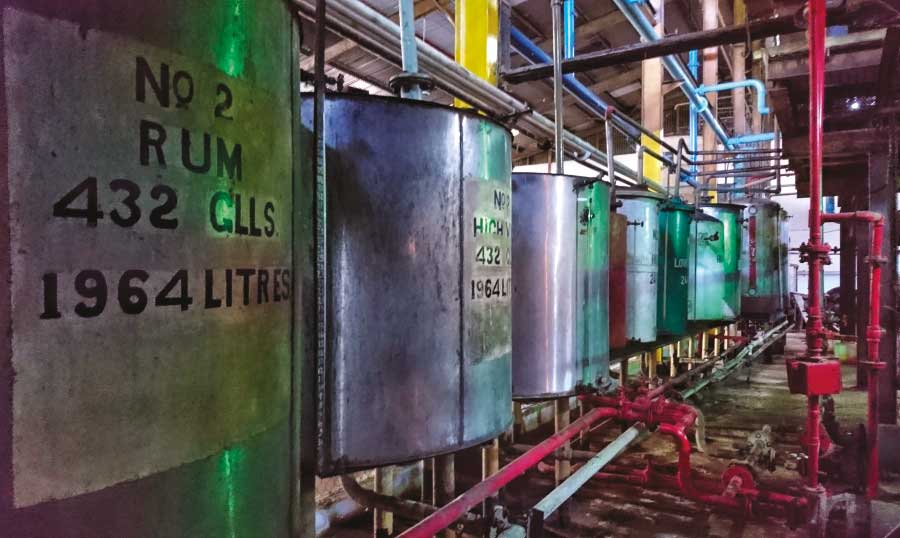
Thanks to the hard work of the team and the determination of its current owners, the Long Pond distillery will have returned to full production capacity within the first few months of 2020. Regarding the future, Alexander Gabriel asserts that the three co-owners are in perfect agreement to ensure that Long Pond’s specific characteristics are fully preserved. Which should give hope to those very expressive rum enthusiasts, as more rums are now finally being marketed without being blended!
AFTER THE FIRE…
On July 17, 2018, a fire in the cane fields surrounding Long Pond distillery spread to the fermentation room. Despite the best efforts of a brigade of thirty firefighters, the building containing the wooden fermentations vats was destroyed, and with it most of the vats themselves, as only 4 or 5 could be saved.
But neither the stills nor the famous muck pit, the ancestral signature of this distillery, were affected by the disaster. The rums undergoing aging were not stored on site, but in cellars close to the capital Kingston, and so were obviously not affected by the disaster. And there were no injuries…
An emergency plan was then drawn up by the owners to resume activities and above all – a key point in the eyes of Alexander Gabriel – to keep the site’s employees in their jobs. After a deep clean, fermentation resumed in the remaining tuns and vats for the ITP and HJC qualities, which require a slightly shorter fermentation time. So just a month after the disaster, the stills were smoking again.
Of course, the fermentation vats had to be replaced. To preserve the style of rums, they had to be made of exactly the same materials – made of oak and exactly the same size. But the original models of these vats hadn’t been produced by coopers for many years.
So, Alexander Gabriel called upon his address book of distillers from around the world. The solution was provided by Carlos Camarena, Master Distiller of tequilas El Tesoro and Ocho of the La Alteña distillery, who, like Alexander Gabriel, is a staunch defender of traditional methods. The Alteña des Camarena distillery has fermentation vats manufactured in the traditional way and Gabriel had noticed them. Thus, Gabriel was able to contact this very artisanal Mexican manufacturer, who reproduced 35 vats of the same model as those at Long Pond, including the endless screw system which allows them to be adjusted regularly.
After being manufactured on-site in Mexico, they are being dismantled and will then be routed to Jamaica, where they will be reassembled by hand, as befits them, and will soon be installed in the building intended to house them. Like its predecessor, the building will actually be open-sided, to better embrace the scents of the Jamaican terroir. The revival of Long Pond is well underway.
